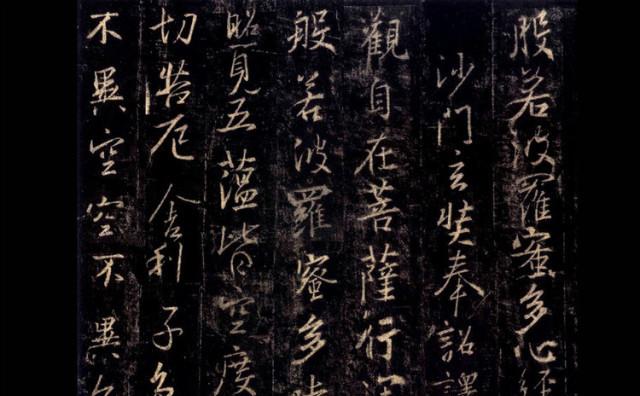The Heart Sutra, whose full name is "Mahabharata Sutra", is roughly known as the "Prajnaparamita Sutra" and "Heart Sutra", and is a classic work with the fewest words but the greatest influence in the Buddhist scriptures. The "heart" (Sanskrit hrdaya) refers to the heart, which means essence and heart marrow. This sutra condenses the vast content of Prajnaparamita into a concise classic that expresses the spirit of "Prajnaparamita", and the whole sutra cites the five aggregates, the three disciplines, the twelve causes and conditions, and the four truths, in order to summarize the principle that all laws are empty. Up to the Song Dynasty, there were at least 11 translations of the Heart Sutra, of which 9 exist. Among them, the translation of Master Xuanzang is the most widely circulated. This book omits the preface, etc., retains only the authentic part, the full text is only 260 words, and the text is smooth and easy to read. However, there are about 20 translations that differ from the Sanskrit texts seen today.
I. Jin Wang Xizhi's "Heart Sutra" calligraphy Wang Xizhi (303-361), yi shao, lang evil Linyi people, known as "book saints".

2. Tang Ouyang inquired about the calligraphy of the Heart Sutra
Ouyang Zhen (557-641), a native of Linxiang (present-day Changsha), Tanzhou, was one of the "Four Great Masters of the Book of Letters".
3. Yuan Zhao Mengfu's "Heart Sutra" calligraphy
Zhao Mengfu (1254-1322), ziang, a native of Huzhou, was one of the four great masters of the Book of Letters.
4. Ming Wen Zhengming "Heart Sutra" calligraphy Wen Zhengming (1470-1559), zi Zhengming, Changzhou (now Suzhou) people, famous calligraphers, painters, poets in the middle of the Ming Dynasty.
5. Ming Dong Qichang Dong Qichang (1555-1636), zi Xuanzai, Huating (now Songjiang, Shanghai), famous calligrapher and calligraphy theorist in the late Ming Dynasty.
6. Ming Fushan "Heart Sutra" calligraphy Fu Shan (1607-1684), character Qingzhu, Shanxi Yangqu people, late Ming and early Qing dynasty calligraphers, medical scientists.
7. Qianlong Qianlong "Heart Sutra" calligraphy Qianlong (1711-1799), the fourth emperor after the Qing Dynasty, loved calligraphy and had a wide range of inscriptions.
VIII. Republic of China Yu Youren "Heart Sutra" Calligraphy Yu Youren (1879-1964), the character is tempting, Shaanxi Sanyuan people, contemporary grass sage, founded the "Standard Cursive Society" in 1932.
IX. Republic of China Hongyi "Heart Sutra" calligraphy Hongyi, formerly known as Li Shutong (1880-1842), famous music and art educator, calligrapher, drama activist, later shaved as a monk, the name of the French voice, the trumpet Hongyi, the late number of the old man, later revered as Hongyi Master.
Xuanzang translated the text of contemplating the bodhisattva in himself, practicing deep Prajnaparamita. See that the five aggregates are empty, and overcome all suffering. The relic, the color is not different from the void, the emptiness is not different from the color, the color is the emptiness, the emptiness is the color, the desire to act, the same is true. The relics are the void phases of the dharmas, which are neither born nor destroyed, neither dirty nor pure, neither increasing nor decreasing. It is why there is no color in the air, no thoughts and deeds, no eyes, ears, nose, tongue and body, no color, sound, fragrance, touch, no vision, and even the unconscious world. There is no confusion, there is no end to ignorance, not even old death, no old death. There is no suffering and no extinction, and there is no wisdom and no gain. For nothing, Bodhidharma, according to Prajnaparamita, has no obstacles in the mind, no obstacles, no terror, far from upside-down dreams, and ultimate nirvana. The three Buddhas, according to Prajnaparamita, attained the three bodhisattvas of Ajanta. Therefore, it is known that Prajnaparamita is the great god mantra, the great ming mantra, the supreme mantra, the no-wait mantra, which can remove all suffering and is true. Therefore, to say the Prajnaparamita mantra is to say the mantra: revealing the truth, revealing the truth, revealing the truth, revealing the truth, bodhidharma.